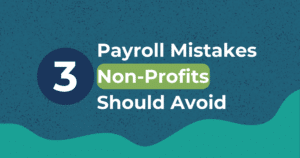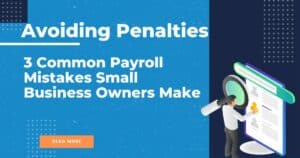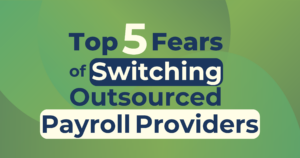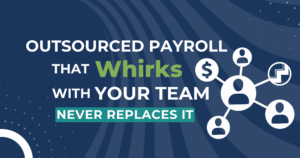If you’re shopping for a house, there are reasons why. You’ve outgrown your apartment. You also adopted another dog and need a backyard, and at least want three bedrooms.
Think of this house like HCM (Human Capital Management). Your company is growing, you’re hiring more employees, and you have more factors to consider as a small business owner.
Now, think of payroll as the kitchen – it’s a non-negotiable for buying a house. You have to be able to store food and feed your family. In the same way, you can’t run a business if you don’t pay your employees.
Payroll is a room in the HCM house. As your business grows, you’re going to be hiring more people. Your processes will get more complex. You need to think about offering benefits to your employees, learning about wage and hour laws, and paying close attention to compliance.
At Whirks, we’ve lived in the HCM house for years. We know how to navigate in the dark and avoid running our shin into a table. We know it’s important for you to understand every nook and cranny of HCM before you decide to partner with a provider.
What is HCM?
HCM (Human Capital Management) is an overdressed term. HCM is a cloud-based, SaaS platform that manages all aspects of your back-office, and takes care of the entire employee lifecycle, from hiring to retiring (or firing).
What does the employee lifecycle look like? Let’s break it down into three, broad sections:
- Hire
- Manage
- Grow
Onboarding a new employee, tracking their time and paying them, and deciding to them go all live within the HCM house. It gives you the power to be efficient in your hiring & firing practices as an employer.
An HCM solution provides one place to help you manage your employer needs.
Hire
From recruiting, hiring, and onboarding, an HCM solution helps you streamline these processes. Integrating applicant tracking (ATS) will help you attract and hire the right candidate on the first try.
Instead of wasting their first workday filling out paperwork, your new hire can enter their information, from their favorite baseball team to their social security number, thanks to electronic onboarding. It also saves you the trouble of re-entering data from their application and resume.
Finding the right person for the job can be brutal. An HCM platform makes this process easier by organizing a potential hire’s information and making onboarding a breeze. Now, you can focus on training and introducing your new employee to your team.
Manage
The majority of your time on an HCM platform is spent managing your employees. You have to track their time, pay them, and potentially offer them benefits. Intuitive software will integrate all of these functions so that employee data lives in one place.
Here’s where payroll comes into play. It is the kitchen in the HCM house. You need to retain your employees and continue running your business. Whether you pay your employees weekly, bi-weekly, or semi-monthly, HCM software helps you to make fewer payroll mistakes and work with what suits your industry best.
To pay your employees, you have to log the time they’ve worked. With a timekeeping feature, you no longer have to manually collect time. Whether your team clocks in physically, on their phone, or a computer, a robust HCM platform will customize timekeeping to fit your needs.
Lastly, benefits administration – two words that make employers a little nervous. With HCM software, you can breathe easy knowing that you’re in compliance. Processing enrollments and deductions, tracking premiums, and working with insurance carriers will save you time and allow you to focus on leading your team.
Grow
The key to a successful business lies in how much you invest in your team. People are your most important and valuable asset. Building a strong company culture helps you retain your best talent, reduce turnover, and increase your employees’ happiness.
Taking time to train your employees will help them excel in their individual roles. Integrating a Learning Management System (LMS) allows you to offer self-paced learning to your team, enhanced with games and badges to push them towards completion.
You can monitor their progress by adding a Performance Management System into your software. This makes it easier to keep track of reviews, set goals, and identify talent potential. Understanding the pulse of your team helps you build a better business and make meaningful connections.
There are several more features of an HCM platform – tax credit services, background checks, 401(k) submissions, and HR services, to name a few. The possibilities are endless when it comes to intelligent HCM software.
Payroll is a room in the HCM house.
You probably wouldn’t buy a house with just a kitchen. It’s the most important feature, but without other rooms, the house isn’t very functional.
When you’re searching for a new payroll provider, you need to look into their HCM software first. Even if you don’t need benefits or timekeeping now, you may want it down the road.
At the end of the day, your house is the place you turn into a home. An HCM solution is the place where you hire, manage, and empower your employees’ growth. After all, your people are your most important asset and the key to a thriving business.
It’s important to understand the difference between these terms because you don’t want to waste time or money on technology that you don’t need or aren’t ready to use. Finding an HCM provider that manages everything in one single-source solution allows you to pay for what you need now, and add more services over time as you grow.
Even though house buying can be scary, it’s always exciting when you finally make your purchase! Finding an HCM partner can feel equally nerve-wracking, as there are many different partners and technologies out there – but the search is worth it.
Now that you’re an expert on the differences between payroll and HCM, consider taking a deeper dive into the functionalities of HCM.






